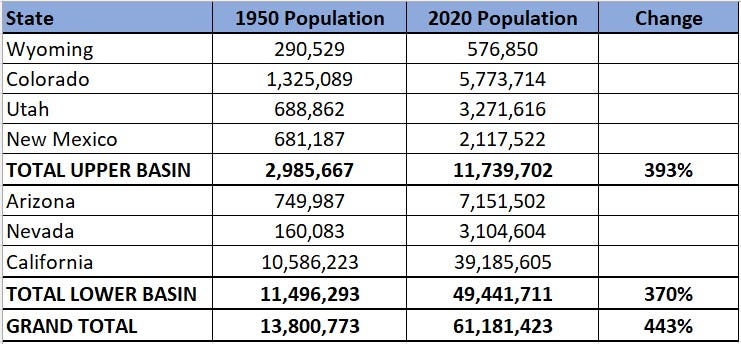Understanding California's Megadrought: A Deep Dive
Written on
Chapter 1: The Drought Situation in Southern California
In Southern California, rainfall seems to occur only sporadically, perhaps once every other Tuesday in January—if we’re lucky.

Instead of showcasing another image of parched earth or the desolate canyons of Lake Mead, I chose this picture to illustrate how Southern California yards might look if water restrictions are enforced. Here, we see succulents that can thrive with minimal water. The photograph is credited to Simone Hogan on Shutterstock.
I apologize for the delay in publishing this fourth segment of the Megadrought Series, as I took a two-week excursion to the Great Plains. My goal? To assess the drought conditions there and enjoy some time away from the chaos—an ideal escape, considering it’s often overlooked by many.
As we delve into the situation in Southern California, let’s also take a glance at drought conditions across various regions:

A significant portion of Southern California remains in a critical drought zone. This map, created with the assistance of the National Drought Mitigation Center at the University of Nebraska-Lincoln, the U.S. Department of Agriculture, and NOAA, highlights the severity of the crisis.
While the atmospheric river that impacted the Pacific Northwest has led to some improvements in northern states, many areas in the West are experiencing even worse conditions than last year, particularly Texas, which previously had little drought.
Global Drought Impacts
It's easy to overlook the relative comfort we have in the U.S. when droughts are devastating regions worldwide. For instance, Iraq's Lake Sawa has dried up due to excessive illegal well drilling, which has diminished the water supply from the Euphrates River.
In Central Chile, the primary water source for Valparaiso—a city with a million residents—is nearly depleted. Similar to California's climate, the region has seen reduced rainfall, shrinking snowpack from the Andes, and rising temperatures, leaving the Penuelas reservoir almost empty.
Africa, particularly around the Horn, faces dire situations of famine due to prolonged droughts that have persisted for years, with significant implications for food security globally.
California's Agriculture and Water Use
California's Imperial Valley is often referred to as America's salad bowl due to its extensive vegetable farming. The water requirements for various crops are staggering:
- Almonds: 23 gallons per ounce
- Cherries: 12.2 gallons per ounce
- Asparagus: 20.3 gallons per ounce
- Tomatoes: 26 gallons per pound
- Eggplant: 43 gallons per pound
- Wine: 872 gallons per one gallon
- Potatoes: 34 gallons per pound
- Rice: 299 gallons per pound
- Oranges: 67 gallons per pound
- Peaches: 109 gallons per pound
- Avocados: 141 gallons per pound
Agriculture consumes approximately 75–80% of California's water resources. The Central Valley, once rich in aquifers, is now suffering as private wells exacerbate the depletion of groundwater, causing significant land subsidence.
The Role of the Colorado River
Living in New Mexico, I witness a drought situation comparable to California's. The onset of seasonal monsoon rains on June 17 brought much-needed relief after months without precipitation.
Discussing the megadrought in the West without mentioning the Colorado River is impossible. This river supplies water to seven states and Mexico, with California being the largest user, particularly in the southern region.
The lower Colorado River basin encompasses California, Nevada, and Arizona, collectively entitled to approximately nine million acre-feet of water annually. To maintain the health of major reservoirs like Lake Powell and Lake Mead, cuts of two to four million acre-feet are necessary. Disputes among states over who will bear these cuts are ongoing, with a deadline for proposals looming in mid-August.
“We need urgent action across all states and sectors,” remarked Tanya Trujillo, Assistant Secretary for Water and Science at the Interior Department.
With only 5% of last year's water available from the State Water Project, the Colorado River remains vital for Los Angeles. Arizona's relinquishment of water rights for California’s Central Arizona Project has already impacted water availability for Pinal County farmers. Will Tucson be next to face cuts?
The extensive water pipeline system in California is crucial for understanding where the water comes from:

Most water for the Metropolitan Water District of Southern California originates from the Colorado River, with the State Water Project (SWP) as a secondary source. The SWP, drawing from rivers in northern California, supplies 70% of its water for commercial use, while the remaining 30% serves agriculture in the San Joaquin Valley.
The Los Angeles aqueduct, primarily fed by runoff from the Eastern Sierra Nevada, has drastically impacted farming in the Owens Valley, even contributing to the desiccation of Mono Lake.
Concerns persist regarding the depletion of groundwater supplies in San Diego, which relies on external sources for 85–90% of its water. Meanwhile, Lake Oroville and Shasta Lake are crucial for the state's water supply, but agricultural allocations have been significantly reduced, leaving cities to cope with approximately 25% of their historical water usage.
The ecological consequences of lower water levels raise alarms about the Chinook salmon population, while farmers are left with difficult choices: fallow their fields or deplete groundwater reserves that are already under threat.
The Colorado River: A Strained Resource
The Colorado River has reached its limits. It has tirelessly supported the water and power needs of over 40 million people, but it is now exhausted. Consider the growth of the states relying on this river since the compact was established in 1922.

Despite the Colorado River Compact's original intention to allocate adequate water resources, changing climate patterns have drastically altered rainfall and snowfall. The last 23 years have been marked by persistent drought, evolving into what is now termed the “Millennium Drought.”
As water flow decreases and demand increases, significant sacrifices will need to be made to ensure sustainability. The Upper Basin states are advocating for the Lower Basin to absorb the majority of future cuts, which will be difficult for farmers in regions like Yuma and the Imperial Valley.
“The cuts will remain in effect until we can confirm that the drought has ended and reservoirs are replenished,” notes Kevin Wheeler, a research associate at Oxford University.
Given the pressing challenges we face, it is crucial to ensure the safety of our firefighters and first responders battling the ongoing wildfires.
Next, we will turn our attention to the Great Plains, America’s breadbasket, which is also facing a daunting challenge in terms of food supply amidst these global shifts.
Sources include: Reuters, Fort Worth Star-Telegram, Water Education Foundation, California Department of Water Resources, Smithsonian Magazine, The Huffington Post, The United States Census Bureau, The Arizona Republic, Ventura County Star, The Guardian.
Please explore these articles for further insights into the megadrought:
This audio from Albert Hammond captures the essence of living in Southern California, where rain is a rare event.
In this 1973 HD video, Albert Hammond reflects on the climate challenges of Southern California, illustrating the ongoing struggle with drought.